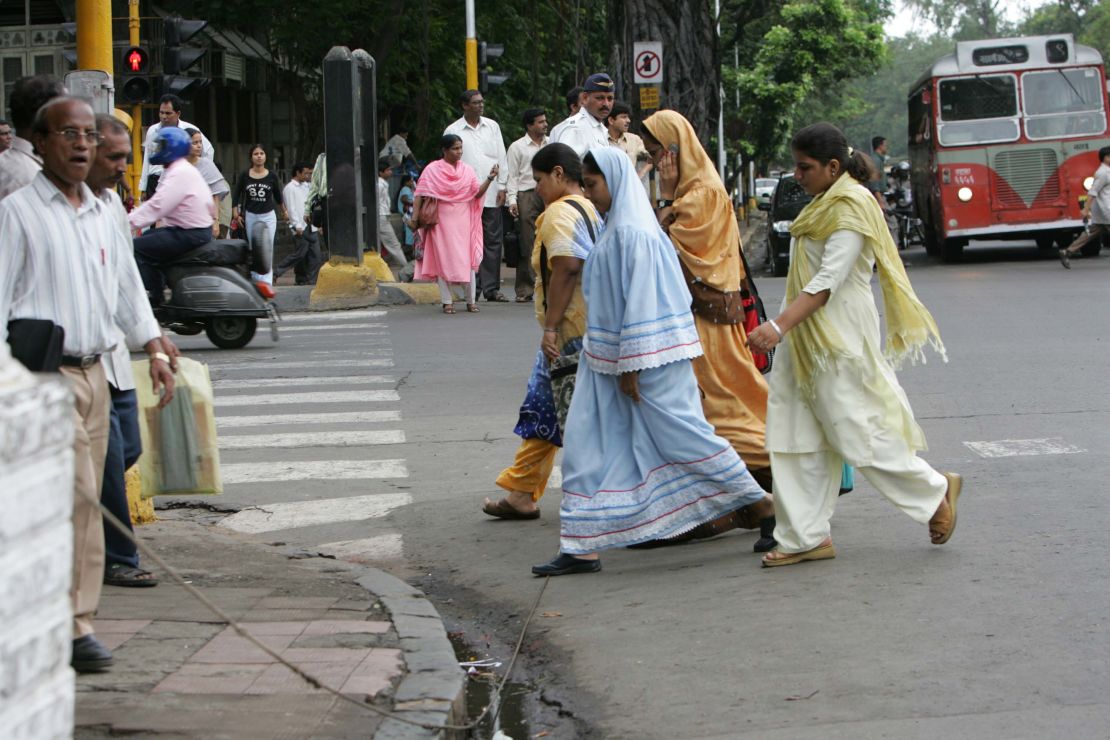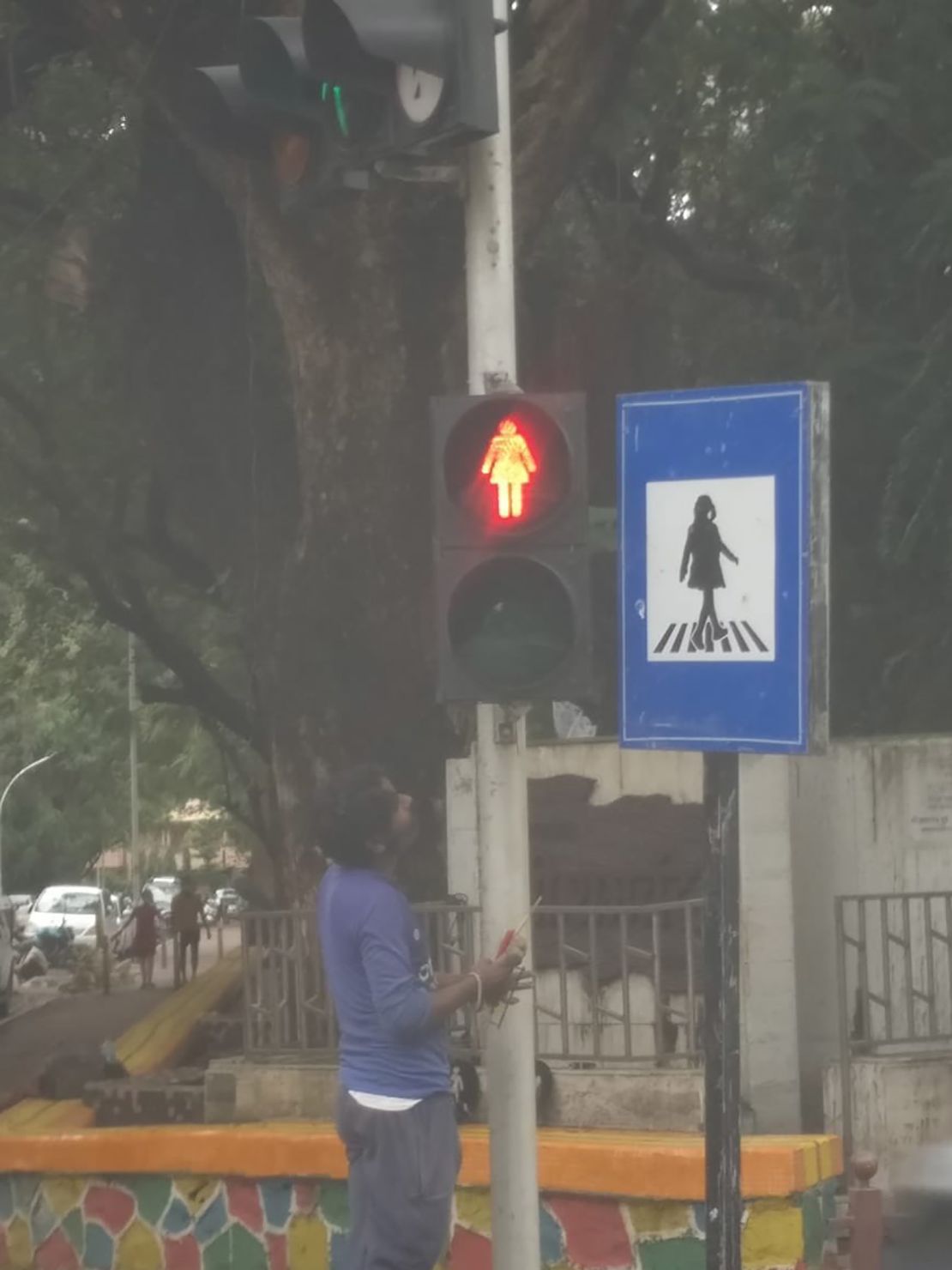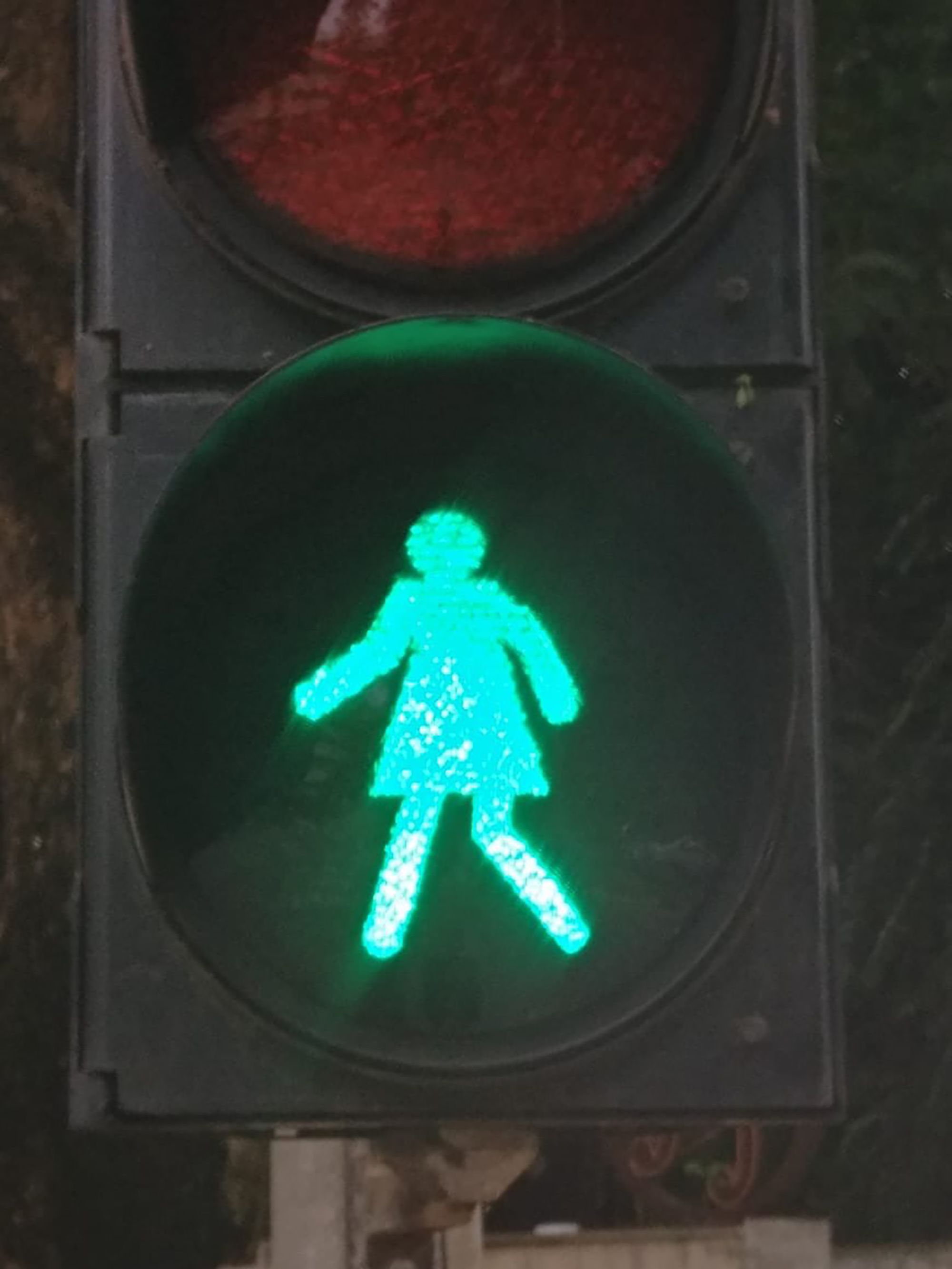Mumbai’s traffic lights are about to look a little different.
The Indian financial capital, home to more than 12 million people, is changing some of its traffic lights to be gender inclusive. The new traffic light design will show red and green female figures, identified by the shape of a dress, instead of the generic male stick figure.
The project is part of a broader urban initiative known as “Culture Spine,” which is headed by Aaditya Thackeray, cabinet minister for tourism and the environment in Maharashtra, the state in which Mumbai is located.
“If you’ve passed by Dadar, you’d see something that will make you feel proud,” Thackeray tweeted Saturday, referring to a neighborhood in central Mumbai as he posted images of the new traffic lights. “(The local administration is) ensuring gender equality with a simple idea – the signals now have women too!”
Sada Sarvankar, a local leader of Thackeray’s political party, Shiv Sena, described the move on Twitter as a “significant step towards #WomenEmpowerment.” Elsewhere, residents and social media users also praised the new lights as a symbolic step toward changing public perceptions, challenging gender norms and demanding representation for women in public spheres.
One Twitter user called the traffic lights “one small yet decisive step forward to ending the subconscious exclusion of the female narrative from how our cities are designed.” Another said it was a sign that women had “gained some more presence and acceptance as the new normal.”
Growing visibility
The ways that urban planning can impact women’s lives has become a talking point in some of India’s cities after a student was gang raped and murdered on a New Delhi bus in 2012. Dark streets, remote bus stops and blind corners can all make it harder for women to safely travel alone at night, while public transportation can be common spaces for harassment or assault. In the aftermath of the incident, authorities in the Indian capital introduced a number of reforms to address some of these safety concerns.

Mumbai’s latest initiative follows in the footsteps of other world cities that have used traffic lights to highlight gender equality. In a number of German cities, street crossings have long featured both male and female stick figures, while Austria’s capital Vienna added same-sex couples to its traffic lights in 2015. Last February, the Swiss city of Geneva announced that it would replace male stick figures with female ones on half of its traffic signs, in addition to a host of other diverse figures, including a pregnant woman, two women holding hands and a woman with an afro.
Such initiatives have sometimes faced resistance, however. When Melbourne added female figures to a set of traffic lights in 2017, for instance, some residents argued that it was, in fact, regressive and heteronormative to assume the conventional figure in pants is male while a figure wearing a dress is female. Others questioned whether the money spent changing the lights might have been better spent addressing gender inequality in more tangible ways.
With India ranking 112th out of 153 countries in the World Economic Forum’s gender equality index, similar arguments have emerged in response to Mumbai’s gender-inclusive traffic lights.
“Maharastra may (rank second) in terms of rapes citing ‘refusal to marry.’” tweeted one YouTube user, known by his channel name, An Open Letter. “Mumbai may be topping the charts in Maharashtra in number of rapes. Women may not be feeling very safe there, but hey, they have equality restoring lights. Amazing.”

India has long struggled with deep-rooted and widespread gender inequality. Many families still prefer sons over daughters, resulting in one of the most skewed sex ratios in the world. For every 100 girls born in India, there are 107 boys.
About 239,000 girls under the age of 5 die each year due to neglect linked to gender discrimination, according to a 2018 study, which amounts to 2.4 million deaths a decade. And though the government pledged to create change after the 2012 bus rape, sexual violence and assault against women have persisted, in what many call India’s “rape crisis.”
“Real empowerment comes when the law protects the dignity of women,” one social media user tweeted in response to Thackeray. “Not merely putting them on traffic lights.”

